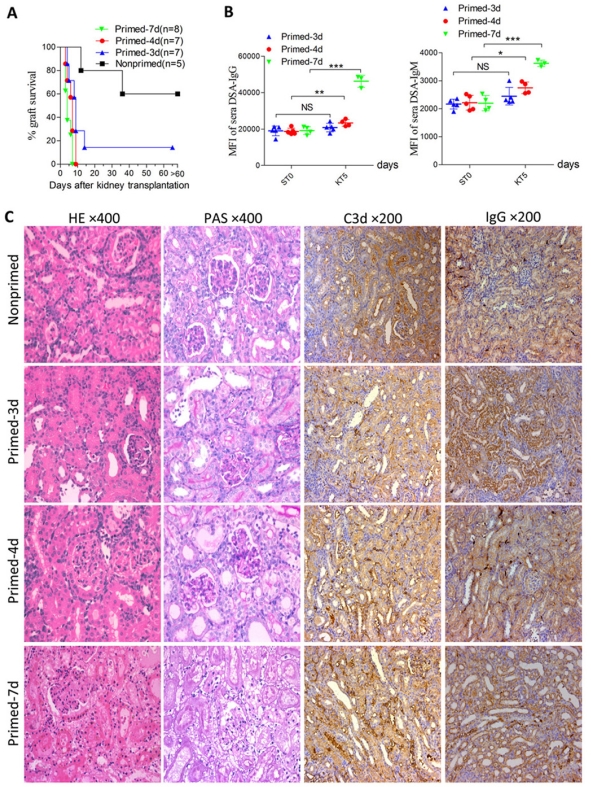Improved Mouse Renal Transplantation Model Mimicking Clinical Antibody Mediated Rejection
1Organ Transplantation Institution, Third Affiliated Hospital of Sun Yat-sen University, Guangzhou, Guangdong, China
2Department of Pathology, Third Affiliated Hospital of Sun Yat-sen University, Guanghzou, Guangdong, China
3Department of Pathology, First Affiliated Hospital of Sun Yat-sen University, Guangzhou, Guangdong, China.
Meeting: 2018 American Transplant Congress
Abstract number: B10
Keywords: Antibodies, Kidney transplantation, Mice, Rejection
Session Information
Session Name: Poster Session B: Acute and Chronic Graft Injury
Session Type: Poster Session
Date: Sunday, June 3, 2018
Session Time: 6:00pm-7:00pm
 Presentation Time: 6:00pm-7:00pm
Presentation Time: 6:00pm-7:00pm
Location: Hall 4EF
Antibody mediated rejection (AMR) is main barrier to long term renal graft survival and mouse model is important to understand the mechanisms of AMR and exploring novel therapeutic strategies. Current mouse renal AMR models were established by priming recipients to donor skin grafts over 7 days prior to kidney transplant. This model in our hand borders hyper acute rejection and cannot ideally model clinical acute AMR. In this study, we investigated the regulatory role of skin priming time within 7 days in the outcomes of subsequent skin-matched renal grafts. We found 4-day skin priming can guarantee recipients develop acute renal allograft AMR mixed with mild cellular rejection, renal grafts survived mean 6.4±2.1 days, characterized by glomerulitis, peritubular capillary (PTC) dilation and capillaritis, deposition of IgG and C3d in PTC but less prevalence of microthrombus in histological changes, rendering the model to better simulate clinical scenario. The improved model was also featured by detectable DSAs only after kidney transplant, implying its more approach to de novo DSA. We also testified renal allograft AMR model can be constructed using the most common lab mice of C57BL/6 and Balb/c, featured by prolonged renal graft survival time of mean 14.4±5.0 days.
We also testified renal allograft AMR model can be constructed using the most common lab mice of C57BL/6 and Balb/c, featured by prolonged renal graft survival time of mean 14.4±5.0 days.  Finally, we proved donor matched skin challenge after kidney transplant hardly affected de novo DSA development. These findings facilitated establishment of improved mouse renal allograft AMR models and promote associated studies.
Finally, we proved donor matched skin challenge after kidney transplant hardly affected de novo DSA development. These findings facilitated establishment of improved mouse renal allograft AMR models and promote associated studies.
CITATION INFORMATION: Zhao D., Liao T., Li S., Zhou J., Han F., Dong Y., Sun Q. Improved Mouse Renal Transplantation Model Mimicking Clinical Antibody Mediated Rejection Am J Transplant. 2017;17 (suppl 3).
To cite this abstract in AMA style:
Zhao D, Liao T, Li S, Zhou J, Han F, Dong Y, Sun Q. Improved Mouse Renal Transplantation Model Mimicking Clinical Antibody Mediated Rejection [abstract]. https://atcmeetingabstracts.com/abstract/improved-mouse-renal-transplantation-model-mimicking-clinical-antibody-mediated-rejection/. Accessed July 6, 2025.« Back to 2018 American Transplant Congress
